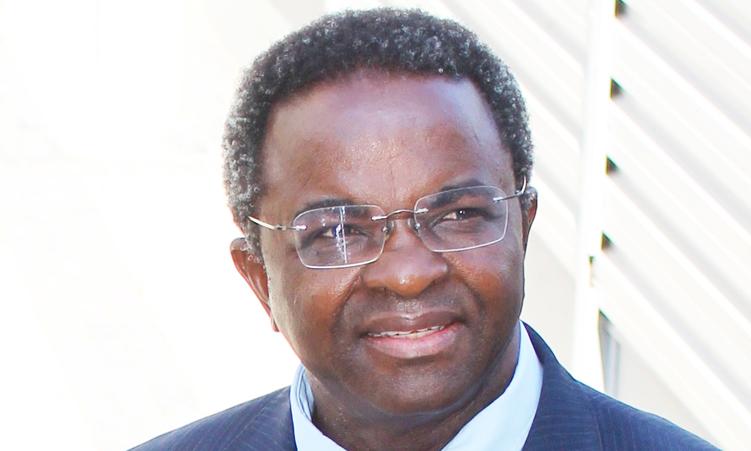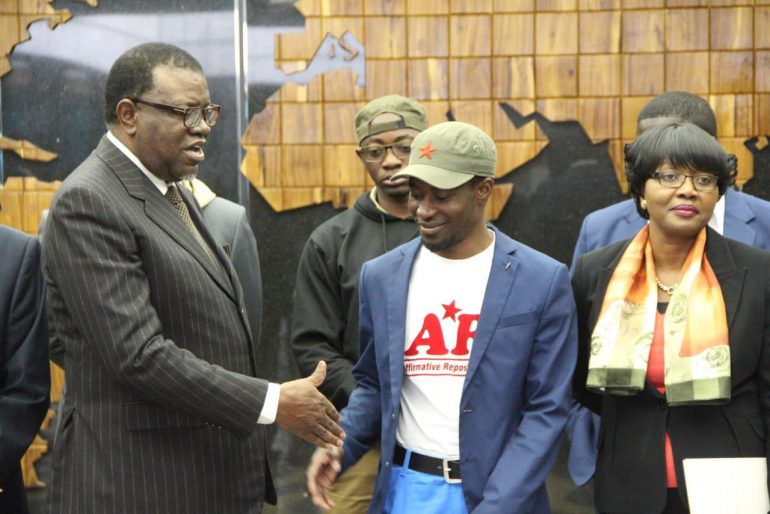Omanyano ovanhu koikundaneki yomalungula kashili paveta, Commisiner Sakaria takunghilile
Veronika Haulenga
Omanyano ovanhu koikundaneki yomalungula kashili paveta, Commisiner Sakaria takunghilile
Veronika Haulenga
Listeners:
Top listeners:
-
play_arrow
Omanyano ovanhu koikundaneki yomalungula kashili paveta, Commisiner Sakaria takunghilile Veronika Haulenga
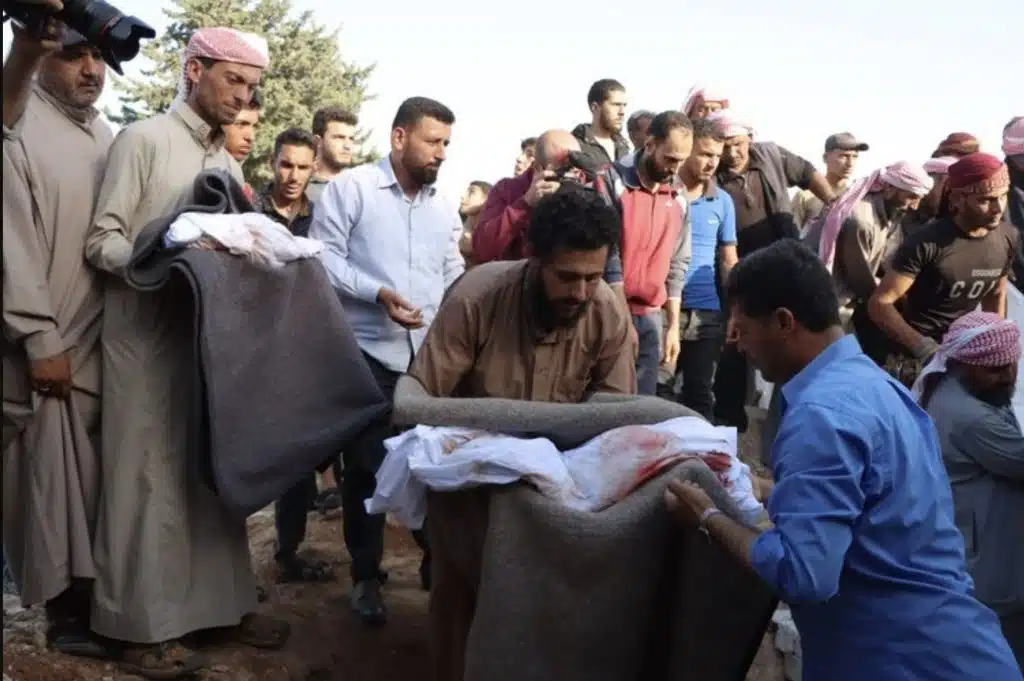
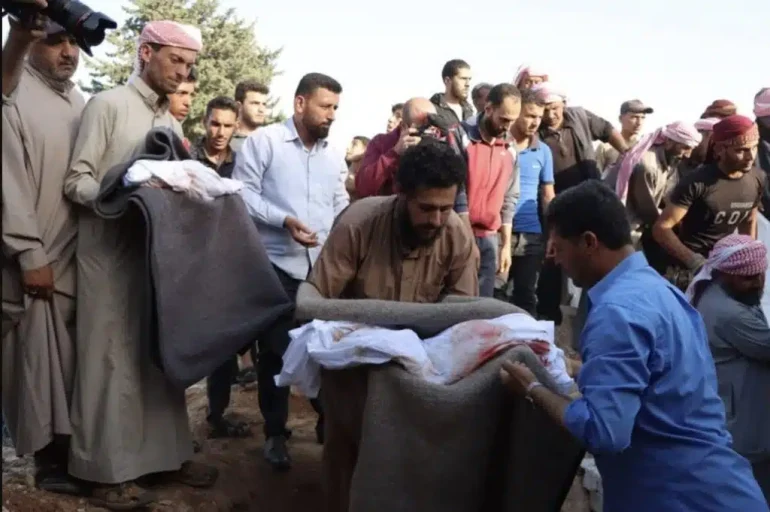
Escalating violence in northwest Syria left 66 people dead in attacks by the government and Russia, according to the White Helmets/Syrian Civil Defense, above, in October 2023. The war, nearing its 13th year, has created the largest displacement crisis globally. Peacemaking efforts by the United Nations go on, but Russia’s crucial cooperation is growing more remote.
By Jusaima Moaid-azm Peregrina via PassBlue
The Syrian conflict, now nearing its 13th year, has left the country in ruins. Despite waning international attention, it stands as the largest displacement crisis globally, with over 12 million Syrians that have been forcibly displaced throughout the region. The toll is dreadful: More than 350,000 lives lost, and 13.1 million people desperately needing assistance, including immediate lifesaving support such as food, health care, clean water and shelter. The situation worsened with the 2023 February earthquake that ravaged both Syria and Türkiye, exacerbating an already dire humanitarian crisis.
The roots of this conflict trace back to 2011, when mass protests erupted in the Arab Spring, seeking the removal of President Bashar Al-Assad. The demands included the repeal of the state of emergency, the release of political detainees, an end to corruption, the legalization of political parties and expanded citizen freedoms. As the Syrian regime cracked down against civilian protestors, peaceful demonstrations spiraled into violence and swiftly evolved into a multifaceted conflict that has gradually drawn regional and international powers into the battle.
In this complex contest for control, various factions emerged, each trying to gain political and territorial dominance. The Syrian regime, rebels, the self-proclaimed Islamic State (IS), the al-Qaeda-affiliated terrorist organizations, Kurdish-led groups and foreign militias, including Hezbollah, all became central players. Notably, the governments of Russia, Iran, Türkiye, the Gulf states, the United States and European countries intervened, further complicating the conflict dynamics.
The Syrian people are trapped in a devastating war, where both geopolitical interests, fueling violence and internal power struggles within the country collectively prolong a protracted battlefield, perpetuating the suffering of Syrian people. As the conflict enters its 13th year, the need for international attention and concerted efforts to address the humanitarian crisis and political stalemate has never been more urgent.
A snapshot of current frontline dynamics
As of 2023, Syria’s frontlines have generally stabilized, with low-intensity, sporadic instances of hostilities. The Assad government now exerts control over approximately 70 percent of the country with the support of Russia and Iran, having been decisive to its survival. These countries have consistently supported the Syrian regime, fostering reliable alliances in the region through their direct interventions and backing of local militia forces under Iranian influence.
Simultaneously, the Assad regime military continues to engage in conflict with Hay’at Tahrir al-Sham (HTS), a coalition of Islamist militant groups that retain control of northwest Syria. In contrast, the US-backed Syrian Democratic Forces (SDF), predominantly Kurdish, control most of northeastern Syria and face regular clashes with Arab tribal fighters while combating the remnants of the IS. While the latter no longer retains control of the territory, the fragmented fighting environment has allowed the IS to persist and launch recurrent attacks. The US has deployed at least 900 military personnel in Syria in support of these SDF-led counterterrorism operations.
Türkiye and its proxies are actively engaged in limiting the influence of the Kurdish SDF and, as such, maintain control over significant areas along the northern border with intensifying attacks on Kurdish forces recently. Furthermore, Israel conducts regular strikes on Iranian and Syrian military positions in Syria, including targeting the Damascus and Aleppo airports. Attacks have dangerously escalated since Hamas’s 2023 October assault on Israel, coinciding with reports of rocket and missile launches from southern Syria over the Occupied Syrian Golan toward Israel. Overall, this multifaceted geopolitical landscape underscores the complex dynamics shaping the situation in the region and the frontlines of the battle being waged in Syria.
No peacemaking developments
On the diplomatic side, the UN continues to support efforts toward a Syrian-owned, Syrian-led political solution in line with Security Council Resolution 2254 (2015). A top priority in the agenda of the current special envoy, Geir Pedersen, has been the swift resumption and progress of the Constitutional Committee — a component of the political process. However, challenges persist, with external factors like the conflict in Ukraine adding further complexity; Russia’s influence over the Syrian regime has been instrumental in past negotiations. However, the current international landscape is marked by increased polarization, with Russia maintaining a rigid diplomatic position. This inflexibility reduces the capacity of mediators to use external pressure, particularly from Russia, to bring conflicting parties to the negotiation table.
The interconnected dynamics of the Ukrainian and Syrian situations, coupled with Russia’s unwavering stance, present challenges for diplomatic efforts and highlight the complexities of facilitating dialogue and conflict resolution in the Syrian crisis.
Additionally, the region is witnessing a pivotal moment in its approach to the Syrian regime, marked by the Arab League’s decision to readmit Syria after a 12-year suspension, alongside diplomatic re-engagement with key regional powers, such as the United Arab Emirates and Saudi Arabia. This move has empowered the Assad regime to maintain its adversarial stance, neglect negotiations and disregard human rights violations.
However, Assad is desperate for funds due to a shattered economy, food insecurity, and heavy sanctions. Assad seeks regional allies to finance Syria’s reconstruction, with his recent diplomatic tour, notably to China, reflecting this pursuit. Assad seeks legitimacy and financial support, while China, historically indifferent to internal dynamics, eyes strategic benefits, including access to the Port of Latakia and Syria’s commitment to its Belt and Road Initiative. However, this diplomatic move is not seamless: With the Islamic State still active in various regions and ongoing protests for regime change in Sweida revealing Assad’s lack of total territorial control, China’s willingness to invest remains unclear, as a stable and secure environment is crucial for its strategic commitments.
What’s next for Syria?
Despite the waning international focus on the Syrian conflict, it is crucial to acknowledge that it is far from a resolution. The Syrian conflict witnessed its most severe escalation in October, marked by a major campaign of airstrikes in Idlib by Assad’s military and Russian allies. Foreseeing developments in 2024 suggests an imminent increase in regional polarization and a focus on regional security management, particularly influenced by the ongoing conflict in Gaza. Although Syria has not been the primary focal point in the regional response to Israel’s attacks in Gaza until December 2023, Israel’s repeated bombings of airports in Aleppo and Damascus could contribute to spilling over the conflict and to a surge in regional polarization.
Accusations between Israel and Assad have intensified, with Israel repeatedly alleging the presence of an entrenched Iranian military in Syria, while Assad accuses Israel of fascism and committing genocide. Internally, Syrian rebels align themselves with the Palestinian cause, and the SDF express sympathy too.
As the geopolitical landscape points toward a potential escalation, the spillover effects of events in Gaza and Ukraine are therefore expected to play a significant role in the Syrian conflict, interconnected through the UN Security Council and geopolitical alliances. In addition, internally, scrutiny of the Türkish-Russian relationship is warranted, as its unfolding dynamics may influence rebel-held territories in the northwest and the future of Kurdish-held areas in the northeast.
What is certain is that civilian travel, trade and logistical operations for UN and nongovernmental organizations have worsened. The UN has explicitly warned that bombings in Syrian airports have severe humanitarian consequences. These challenges could exacerbate due to the reorientation of funds by the international community and reduced access to Syria, which could, in turn, imply severe humanitarian consequences in an already fragile economic environment. The evolving situation therefore requires close observation to understand the unfolding dynamics and the impact on the Syrian conflict’s trajectory and potential diplomatic developments.
To read the original article click here.
Written by: Contributed
aid al Qaeda Arab Spring Bashar Al Assad Conflict IS Islamic State Russia Syria Turkey United Nations
Similar posts
Windhoek Weather
Most popular
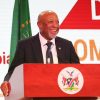
Mbumba signs off new benefits for retired political office bearers

Former FNB employee arrested after defraud pensioner off N$215, 000

Namdia Heist: More questions, lots of confusion

Omuhwahwameki Michael okuunganeka oshikonga shoku patitha oostola dho Rani moshilongo ashihe.

Walvis Bay woman loses over N$777.000 to a fraudster
Copyright 2025 Future Media (Pty) Ltd | Website by Digital Platforms
Tel: +264 83 000 1000 | Email: news@futuremedia.com.na


